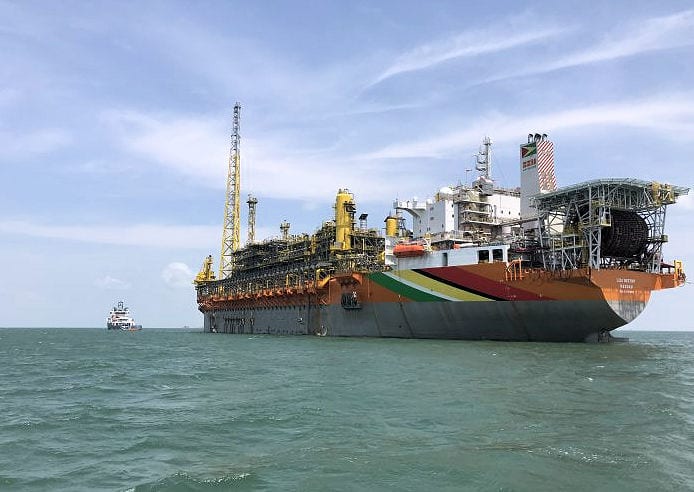The 2% royalty to be paid by ExxonMobil to the Guyana Government when oil production begins does not represent the country’s entire take from its offshore oil revenues; a critical component of the discussion that is missing from public debate in the South American country.
So says former Member of Parliament (MP) in Guyana, Charles Ramson Jr., who believes the holistic revenue take has instead been lost in the public debate and contends that attention also has to be given to the profit split arrangement, in addition to components such as corporation taxes to be paid.
Ramson Jr., an Attorney-at-Law and current Chair of the Georgetown Chamber of Commerce and Industry’s Petroleum Committee, was on September 6 a guest on the inaugural ‘Guyana’s Oil and You’ radio serial, and was asked to weigh-in on the two per cent royalty to be paid to Guyana by ExxonMobil on every barrel of oil produced.
According to Ramson Jr., who holds a master’s degree in Oil and Gas Enterprise Management from the University of Aberdeen, there could be instances where very high royalties are paid but the corporation taxes and profit-sharing arrangements are in favour of the operator.
In similar vein, Ramson Jr. posits a contrasting situation where very low or no royalty is paid but the profit split and corporation taxes are more than adequate to compensate for what is lost through the royalty rate.
According to Ramson Jr., “the fiscal structure really depends on a suite of measures; royalty is just one of the ways that a country gets revenue.”
Asked to suggest an acceptable royalty rate that could have been had through the ExxonMobil PSA, Ramson Jr. responded saying, “if you are asking for me to give an arbitrary number, everything is relative.”
He told listeners, “What I am trying to say is royalty is just one of the combination of taxes that can be used to give an overall take.”
According to Ramson Jr., “in order to assess the strength or weakness of any fiscal regime, you have to look at the overall take.”
In addition to the 2% royalty, Guyana will get 50% profit oil. The government’s take from the Liza Phase 1 Development is estimated to be US$7 billion over the lifetime of the project. When all the developments, including Liza Phase 1, are factored in from the 13 discoveries made so far at the Stabroek Block, government’s take is expected to be approximately US$117.5 billion.
With a population of just over 750,000 people, analysts have said the South American country is poised to become one of the richest countries in the world in per capita terms from the development of its petroleum resources.
RELATED:
Political partisanship ‘biggest mistake’ for Guyana’s Sovereign Wealth Fund – former MP




Hope that this deal will be a good and wise deal for our Nation and that Guyana can be also one of the ritched Country of South America.
And that we people can feel it also in certain things like Healty , etcm